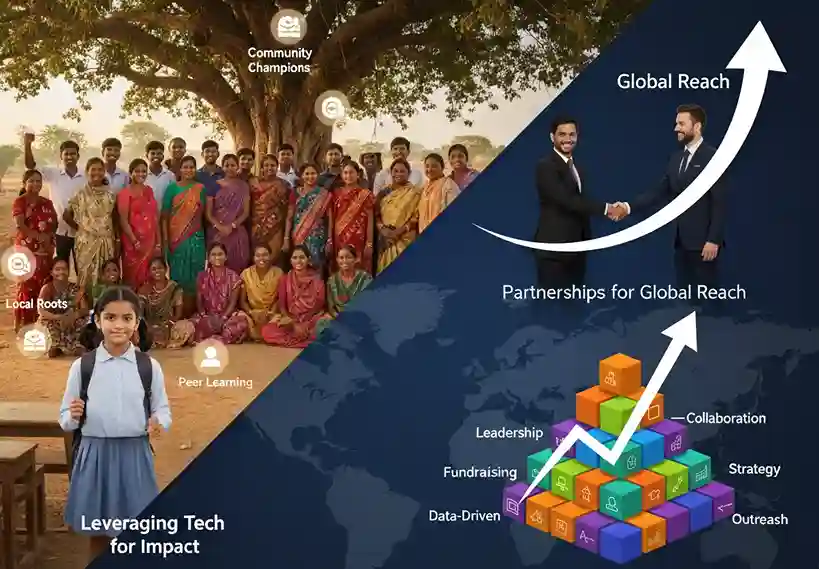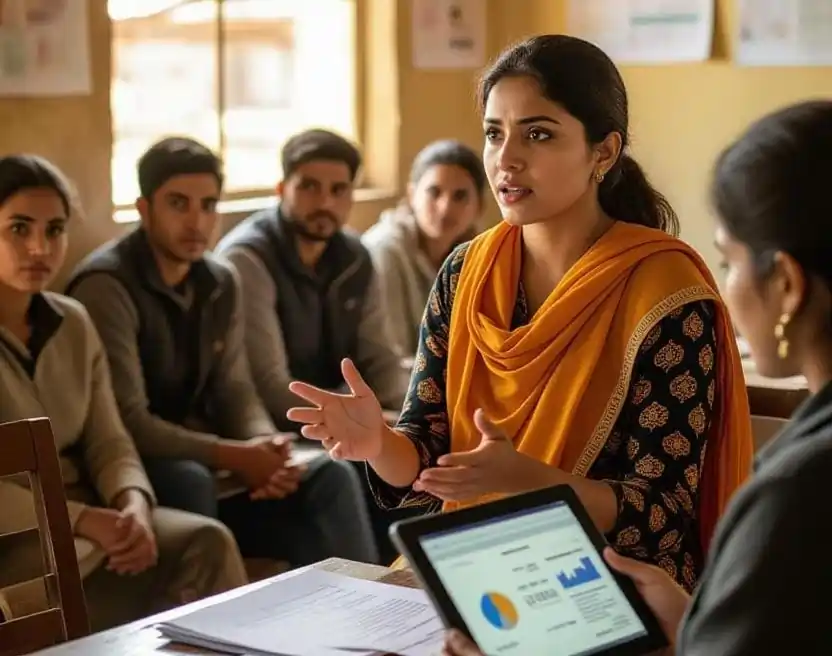Introduction: Have You Ever Wondered What Makes a School Truly Thrive?
Think back to your school days—was it just the lessons and textbooks that shaped you? Or was it the people, the events, the community behind the scenes cheering you on? Education doesn’t end at the school gate. In fact, it starts to flourish when parents, teachers, and communities come together. But here’s the reality: according to a 2022 Gallup poll, only 20% of U.S. parents feel they’re “highly engaged” in their child’s school life. We’ll explore how parental engagement in education and community involvement in schools can help building supportive educational ecosystem that benefits every learner.
If you’re a parent who wants to contribute more, a teacher hoping to build stronger family ties, or a community leader aiming to make a difference—this blog is for you.
Why It Matters—And Why It’s About More Than Grades
Sure, academic scores are important. But did you know that students whose families are actively involved in their education are:
- More likely to attend school regularly
- More engaged in the classroom
- More confident socially
- More likely to graduate and pursue further studies?
As a reader, you might be asking: Does your involvement really help? IT all counts; your presence, showing up to parent-teacher meetings, helping with homework, or even just talking about school at dinner—signals that education is a shared priority.
And when communities chip in with mentorship, workshops, or funding? The school transforms into a vibrant, supportive hub where every child can grow. Organizations like those highlighted in Top 10 Education NGOs in India show how community-driven initiatives can transform educational outcomes.
What Building Supportive Educational Ecosystem Looks Like (And How You Can Be Part of It)
Building one doesn’t require fancy tech or million-dollar budgets. It requires commitment, communication, and community.
Here are the five building blocks you’ll want to know:

2. Joint Decision-Making
Ever attended a school board meeting? Most haven’t. But your voice matters. Join your school’s PTA or volunteer to be part of curriculum discussions. It’s not just symbolic—these platforms shape real policies.
3. Celebrating Cultures and Perspectives
Schools should reflect the communities they serve. Hosting cultural nights, offering multilingual resources, and honoring different traditions make everyone feel welcome.
4. Learning Beyond the Classroom
Imagine kids learning gardening from a local farmer or financial literacy from a neighborhood banker. Co-learning with the community makes education exciting and relevant.
5. Systems That Stick
Training sessions for parents, ongoing teacher development, and sustainable partnerships—these are what turn good ideas into lasting change.
6. Creating a Supportive School Environment for Mental Health
A thriving school prioritizes emotional well-being. Teachers and parents can adopt strategies outlined in Creating a Supportive School Environment for Mental Health to ensure students feel safe and supported.
Real Stories That Show It Works
📍 Finland involves parents at every level of curriculum planning. The result? A top-tier education system that’s globally admired.
📍 New York City’s Community Schools Initiative provides health care, afterschool programs, and family workshops under one roof. Schools that adopted it saw fewer absences and better grades.
📍 Delhi, India introduced mandatory parent-teacher meetings across public schools. Within months, schools saw cleaner environments, stronger parental trust, and higher test scores.
You see the pattern? When families and communities engage, everyone wins. For more inspiring examples, check out 10 Top NGOs in India That Are Changing Lives.
You Might Be Thinking… “But What If It’s Not That Simple?”
You’re right. Real challenges exist, and they vary from place to place. But let’s break down a few common ones and how we can tackle them together:
Language barriers? Suggest translated newsletters, dual-language events, or bilingual liaisons.
Lack of time? Not every parent can attend every meeting. Schools can rotate times, record sessions, or use surveys to gather input asynchronously.
Past negative experiences? It starts with rebuilding trust. That means transparency, empathy, and small wins—like positive phone calls home. Learn more about fostering trust in Mental Health Support in Education.
Unclear roles? Define expectations clearly. As a parent, know that helping with homework, attending a workshop, or sharing your expertise is enough.
10 Ways You Can Get Involved Today (No Special Skills Needed)
- Attend a school open house or parent night
- Join a family WhatsApp group or digital platform
- Volunteer to read a story in your native language
- Help coordinate a cultural event
- Contribute supplies or books to a class library
- Share your career story with students
- Invite a local business to support an event
- Offer tutoring in a subject you’re good at
- Join a parent advisory group
- Simply check in with a teacher and ask, “How can I help?”
Remember: Engagement looks different for everyone—and that’s okay. For more ways to get involved, explore How to Find and Support Local NGOs Near You.
The Community’s Role (Yes, That Means You Too!)
Maybe you’re not a parent—but you’re still a neighbor, mentor, or leader. Here’s how you can plug in:
- Partner with local schools for workshops or career days
- Create internship or mentorship opportunities
- Donate space for parent meetings or training sessions
- Collaborate on literacy or STEM programs
- Sponsor tech, supplies, or enrichment activities
Support doesn’t need to be grand. Even small gestures—like free snacks for afterschool clubs—show students and families that their community cares.
Consistency: It’s a Journey, Not a One-Time Event
If you’ve ever started a great routine—like exercising or journaling—you know it takes commitment. The same goes for engagement.
- Celebrate progress: Did PTA attendance go up? Did more parents volunteer? Share those wins!
- Ask for feedback regularly—and act on it.
- Nominate and spotlight “community champions.”
- Tie engagement goals into school improvement plans.
Above all, be patient. Strong partnerships take time, but their ripple effects last for generations.
Final Thoughts: Let’s Do This—Together
If you’ve made it this far, one thing’s clear: you care. And that’s where change begins.
Parental engagement in education and community involvement in schools aren’t about perfection. They’re about presence. They’re about progress. And most of all, they’re about people coming together with one shared goal—helping students succeed.
So whether you’re a parent with 10 minutes a week or a community leader with resources to share, there’s a place for you in this ecosystem. For strategies to sustain engagement, see Role of Teachers in Promoting Emotional Health.
“When schools open the door, communities walk in. When they collaborate, students soar.”
Let’s open those doors. Let’s soar together.
💛 Donate to Support Mental Health Programs 💛
Your donation helps us fund:
- Emotional health toolkits for classrooms
- Training sessions for teachers and caregivers
- Mental health workshops and counseling support
- Art and play therapy sessions for children in trauma
Even a small monthly contribution can fund mindfulness materials, journals, or wellness kits for multiple children.
Want to see how effective digital platforms can amplify NGO impact? Check out The Power of NGO Websites: Examples and Key Elements.




















2 thoughts on “Building Supportive Educational Ecosystems: A Complete Guide to Community and Parental Engagement in Education”
Pingback: Cybersecurity Basics for Students and Educators: A Practical Guide to Digital Safety in Schools - Unessa Foundation
Pingback: Digital Literacy and Online Safety: Essential Guide for Educating Underprivileged Children in India - Unessa Foundation